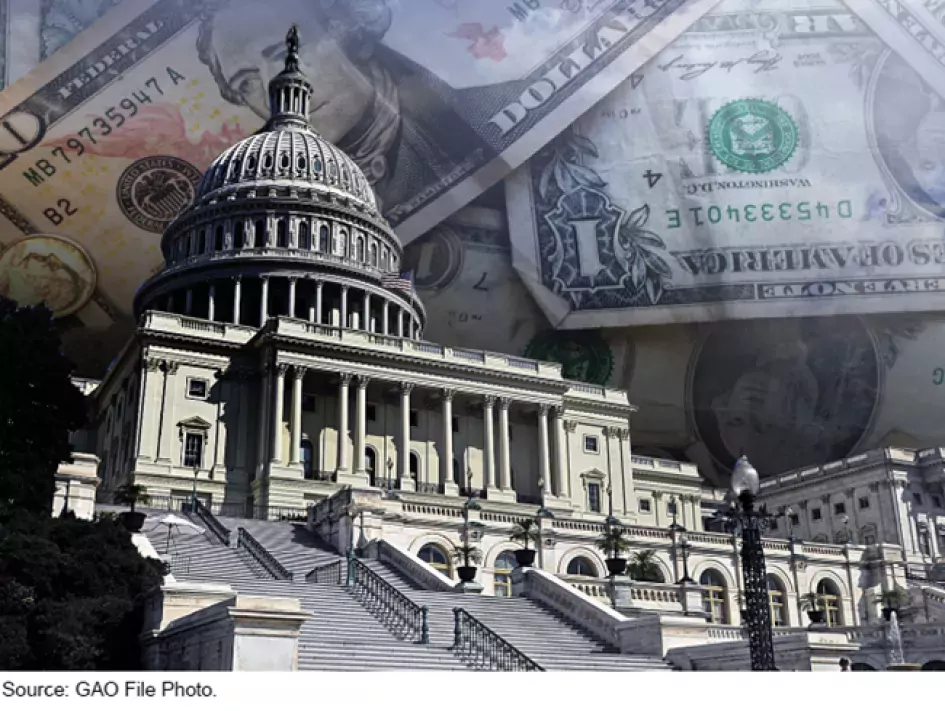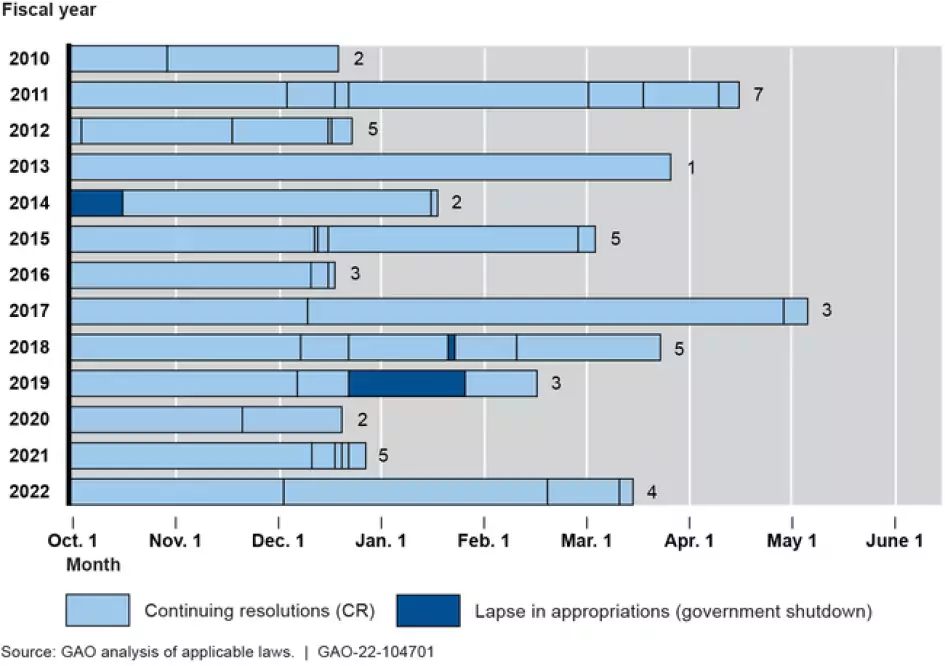What is a Continuing Resolution and How Does It Impact Government Operations?
No matter what comes of the election next week, the current Congress will have a lot on its plate, including a continuing resolution that expires December 16.
But what exactly is a continuing resolution? Continuing resolutions are temporary spending bills that allow federal government operations to continue when final appropriations have not been approved by Congress and the President. Without final appropriations or a continuing resolution (CR), there could be a lapse in funding that results in a government shutdown.
Today’s WatchBlog post looks at how CRs have been used since 2010, and our work on the impacts CRs have on federal operations.
Image

How is a CR different from a budget?
The federal budget is a proposal by the President outlining spending goals and priorities during a given year. Congress debates this funding, and then votes to appropriate funding. However, Congress has only completed this process before the beginning of the fiscal year 3 times in the last 47 years, most recently for FY1997.
CRs generally continue the level of funding from the prior year’s appropriations or the previously approved CR from the current year. Full-year CRs provide appropriations for the remainder of the fiscal year and are functionally similar to final appropriations. A CR can include changes from the prior year’s budget that could (1) alter the rate at which funds are utilized, (2) extend an expiring program authority, or (3) provide a specific dollar amount of funding to a program during the CR.
How often does Congress pass a CR and why?
A CR is needed any time that Congress and the President do not reach agreement on the spending levels and enact regular appropriations by the start of the federal fiscal year in October. Our recent report looked at when CRs were used and for what duration. There have been 47 CRs between FY 2010-2022. These ranged from 1 to 176 days (just under 6 months). And on three occasions—in FYs 2014, 2018, and 2019—no CR was approved, resulting in a shutdown. As previously stated, the federal government is currently under a CR for FY 2023 that expires December 16.
Duration and Number of CRs and Lapses in Appropriations, FYs 2010-2022
Image

What does this mean for federal agencies and the services they provide?
Continuing resolutions are common. They keep our government running until the CR expires or when final appropriations are enacted, whichever comes first. But they do so at a cost.
In a July report, we looked at how three federal departments were impacted by CRs. Officials from the Departments of Health and Human Services (HHS), Agriculture (USDA), and Education told us that CRs have resulted in administrative inefficiencies and limited management options in areas such as hiring and travel for their agencies. For example:
- HHS officials told us that each time a CR is about to expire without another CR or final appropriation in place, financial and human resources staff must spend time planning and preparing for a potential shutdown rather than focusing on their regular responsibilities.
- USDA officials said that CRs can slowdown or stop hiring activities. This can also mean that the department may not extend new hire offers during a CR. USDA officials also reported impacts to their training efforts.
- Education officials told us that travel funds may be inaccessible during a CR, limiting their staff’s ability to conduct on-site program monitoring during the grant-making process. Education officials also told us that uncertainty around funding limited their ability to plan for the amount of funding grant recipients may receive. This may have disrupted or discontinued some education-related community activities.
How have agencies adapted?
Education officials told us that during the CR period, they continue to announce grant opportunities, but also include language that notes that the actual level of funding depends on final congressional action. This helps Education avoid setting program-specific funding limits. It also allows the department’s budget staff to meet the needs of individual programs by reducing some programs’ funds to cover the needs of other programs.
The three departments’ officials also said they look for funding flexibilities beyond the annual appropriation process, which has helped them manage the effects of CRs. For example, HHS officials said their unaccompanied children and refugee programs are two of the few programs within the department that have multi-year appropriations.
Learn more about continuing resolutions and their potential effects on agencies and their programs by checking out our recent report.
- Comments on GAO’s WatchBlog? Contact blog@gao.gov.
GAO Contacts
Related Products

GAO's mission is to provide Congress with fact-based, nonpartisan information that can help improve federal government performance and ensure accountability for the benefit of the American people. GAO launched its WatchBlog in January, 2014, as part of its continuing effort to reach its audiences—Congress and the American people—where they are currently looking for information.
The blog format allows GAO to provide a little more context about its work than it can offer on its other social media platforms. Posts will tie GAO work to current events and the news; show how GAO’s work is affecting agencies or legislation; highlight reports, testimonies, and issue areas where GAO does work; and provide information about GAO itself, among other things.
Please send any feedback on GAO's WatchBlog to blog@gao.gov.




